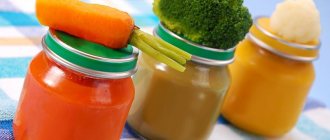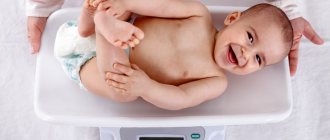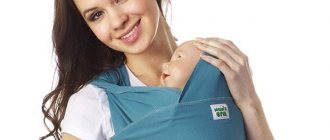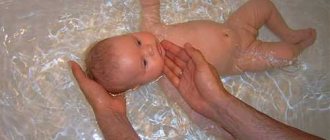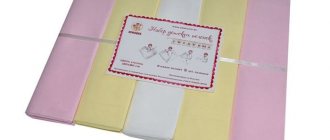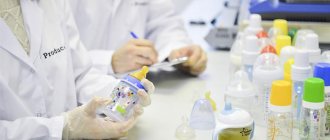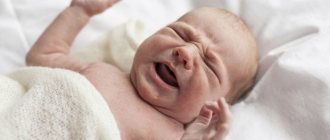Caring for your baby's belly button
The wound healing kit includes hydrogen peroxide, cotton swabs and swabs, brilliant green, and a pipette. If the jar of peroxide is already equipped with a pipette, there is no need to buy an additional one. If you don’t want to leave traces of brilliant green on the baby’s skin, buy a tincture of calendula or eucalyptus - they are colorless.
The wound on the navel heals up to 14 days. Daily antibacterial treatment should remove discharge from the wound within a week. If the discharge continues, contact your pediatrician.
Treatment of the umbilical wound
In the first days after discharge from the hospital, it is necessary to care for the baby’s umbilical wound. For this purpose, you should stock up on the following tools:
- Hydrogen peroxide (3%). It is recommended to choose bottles with a built-in dispenser; they are more convenient to use.
- Cotton pads and buds.
- Brilliant green solution (zelenka). This remedy is replaced with tincture of calendula or eucalyptus, which do not stain the skin.
A pipette with a round tip is also included in the first aid kit. This tool is needed if you purchased peroxide without a dispenser. The umbilical wound heals in 10 to 15 days with proper and regular care. If after 2 weeks fluid is released from the wound, you should contact your pediatrician.
For colic and gas
The selection of medications for colic should be made with the pediatrician observing the child. If the baby does not have any special features in the functioning of the gastrointestinal tract, a traditional list of drugs and remedies will do. The first aid kit should have:
- Activated carbon crushed in capsules, Sorbex is one of the enterosorbents to choose from, which helps not only with gases and colic, but also with diathesis or food poisoning.
- Bifidumbacterin is a drug based on live bacteria. It should be used only after a doctor’s permission for symptoms of dysbacteriosis.
- A small belly warmer.
- Glycerin suppositories are small, activating peristalsis in the intestines.
- Espumisan, Plantex, Simethicone for bloating and gas.
- Microclyster.
- Gas exhaust tube with restrictor.
- Dill water - from Baby Calm or prepared yourself from fresh dill.
Treatment of colic
Separately about colic. Dr. Komarovsky is inclined to believe that intestinal colic from birth to three months is a physiological norm that any baby goes through to establish stable functioning of the gastrointestinal tract. For this reason, Komarovsky recommends not to interfere and be patient - after an hour the colic goes away, and after three months of age it stops altogether.
If you still want to help the baby, give the child dill water or Espumisan, and give a light abdominal massage. The same applies to constipation in breastfed babies. If the child is calm, but the diapers are clean that day, there is no reason to worry. If the baby constantly cries, does not want to eat and suffers from constipation, rinsing with microenemas and using suppositories is permissible.
Helping your baby with colic and gas
This problem is present in most newborns and is considered typical for infants, especially in the first 3 months of life. This is due, first of all, to the fragile gastrointestinal tract of a newborn baby. To alleviate the child’s uncomfortable condition, and to protect your nerves, today there are many means that can effectively relieve the child from suffering. As an example, the following list of funds can be given:
- dill water, which is sold in a pharmacy in ready-made form, this is the composition of the drug BabyCalm, or you can prepare a tincture yourself from dry dill seeds;
- a special gas outlet tube with a limiter, which is intended to remove the formed gases;
- children's microenemas for newborns;
- pharmacological drugs for flatulence: Espumisan, Plantex, Simethicone or something else;
- homeopathic suppositories and glycerin suppositories: Viburkol, Glycelax;
- the smallest belly warmer;
- for the treatment of dysbiosis, drugs whose composition is based on live lactobacilli, which must be agreed with a doctor, for example - Bifidumbacterin;
- enterosorbents: activated carbon in capsule form, Polysorb, etc.
Reading...
What is pemphigus and why is it dangerous for an infant?
Additionally > The baby continues to hiccup for a long time - what to do?
For colds and fevers
A first aid kit is compiled for a newborn with the obligatory presence of anti-inflammatory and antipyretic drugs. There is no need to lower the temperature from 37 to 38.5 - this is not a symptom of the disease, but a reaction of the body, its immune response. At this temperature, infections die, and by reducing it you disrupt the body’s defense process.
Another case is spasms and convulsions in a child at elevated temperatures. Then, at the first symptoms of spasms or convulsions, the baby is given an antipyretic and an ambulance is called. List of a complete first aid kit for a feverish newborn:
- Electronic or children's thermometer in the form of a measuring strip or pacifier for babies.
- Antipyretic rectal suppositories - Viburkol.
- Remedies for the common cold: Nazivin, Marimer based on sea water, Otrivin and similar for infants.
Various traditional medicine compresses made with vinegar or vodka are prohibited!
Care accessories and medical instruments
For hygienic child care, medical procedures or emergency first aid, it is extremely important to have not only medications on hand, but also special accessories and medical instruments.
Such as:
- Two thermometers - one for measuring the baby’s body temperature, the second is for bathing water
- Several sterile bandages (wide and narrow)
- Germicidal patch
- To trim nails, you should purchase special scissors with safe, rounded tips.
- Cotton swabs for cleaning ears and nose
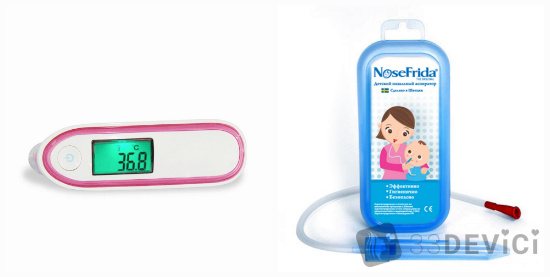
a) a thermometer for measuring body temperature; b) aspirator
- A dosing syringe or measuring spoon that can be used to determine the correct dosage of medications
- Several pipettes
- Gas outlet pipe
- Silicone syringe
- Baby heating pad
- A nasal aspirator is absolutely necessary for a runny nose and helps suck out mucus.
- Soft bath sponge
- Baby sterilized Vaseline or vegetable oil for massage
- Also provide an elastic band
We have found out what is included in a first aid kit for a newborn from accessories and tools, so we move on to the next important point of the article.
Baby skin care
The list of necessary first aid kits for a newborn is supplemented not only by medicines, but also by cosmetics that have a natural composition. Store care products and creams separately from medications, keep them at hand, not far from the baby's crib.
Ingredients of a skin care kit for a newborn:
- Cotton sponges.
- Wet or cream-soaked wipes are large.
- Drops for rinsing the nostrils - Humer, Marimer, rinsing bulb.
- Eye drops - Torbex to prevent inflammation on the eyelids and tear ducts.
- Baby talc for diaper rash.
- Purelan or Bepanten ointments for healing minor scratches.
- Collections of medicinal herbs: chamomile, thyme, string, coltsfoot.
- Children's bath foam and baby shampoo. Use foam no more than twice every 7 days to maintain natural lipid metabolism in the child’s skin.
- Scissors for cutting nails. It is recommended to use regular scissors, since special children's scissors are usually too dull to be used to cut a child's nails.
Hygiene products
Hygiene of a newborn baby is an important stage of care, which includes a number of specific procedures, which can only be carried out correctly and effectively using the following hygiene products.
List of what you need:
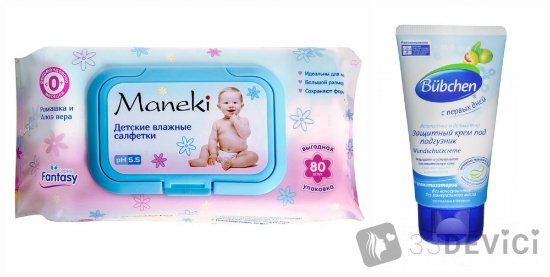
a) wet wipes; b) baby cream
Decoctions of medicinal herbs are used to relieve inflammation, itching and heat rashes, and can heal abrasions and diaper rash. If the child does not have any skin disorders, then you should not use medicinal herbs, since they can dry out the delicate baby skin, but they may be needed at any time, so you should still stock up on them.
The composition of a first aid kit for a newborn baby can include a wide range of hygiene products and is not limited to the list suggested above; parents can purchase everything they need at their discretion.
The decision largely depends on what budget you can afford. It should only be noted that when buying any baby care product, you must always pay attention to the expiration dates and composition!
Proper storage of a first aid kit
A first aid kit collected for a newborn, just like for an adult, should be reviewed every three months. When the expiration date expires, the drugs can no longer be used! Everything related to daily child care should be at hand - talc, sponges, creams, foam. Place them so that the child cannot reach them on his own in your absence.
Do not throw away the instructions - they indicate the conditions for storing and taking medications. Rectal suppositories and skin ointments are stored on the lower shelves of refrigerators, jars of solutions and tablets are stored in a dark place. Write down the contents of the first aid kit on a separate piece of paper and use it to check the availability of medications.
Sample list of first aid kit for a newborn
The health of a newborn baby requires special care, because the baby is absolutely defenseless. It is very important to prepare in advance all the necessary means and preparations, which should always be at hand at the right time. The simplest solution to this issue is to purchase a ready-made kit at the pharmacy with collected child care products.
The negative factor in this case is that often such a kit may contain either unnecessary components that will never be useful, or, conversely, it will not have important medications that will have to be purchased separately. In this regard, it is best to rely on yourself and purchase everything you need on your own.
We will describe in detail the first aid kit for a newborn and the list of necessary items in our article.
Let's go to the sea
A first aid kit for a child at sea includes a list of additional means of protecting the baby. To protect your head from sunlight, it is better to choose not baseball caps, but cotton handkerchiefs with light colors or just white. To protect your skin from sun rays, buy sunscreen, paying attention to its composition and level of sun protection. The higher it is, the better the skin is protected, but essential oils are not allowed in the product for the baby.
If the skin turns red after exposure to the sun, a first aid kit for a child at sea must contain Rescuer or Panthenol ointments; Panthenol spray will also be easy to use.
The first aid kit for newborns is supplemented by a pediatrician monitoring your baby. Also discuss common remedies with your pediatrician; perhaps he will suggest an alternative that is more suitable for your baby or make adjustments to the composition of the first aid kit. In some cases, in such a first aid kit you can find special nozzles for feeding the baby, nipples for feeding, which wean the baby from biting the breast. And in the future - herbs and preparations that facilitate tooth growth.
List of medications in a first aid kit for a newborn
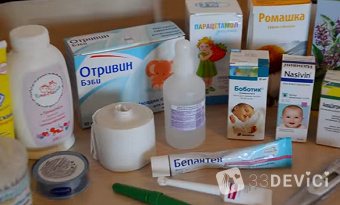
Let's answer the question - what should be in a first aid kit for a newborn?
Young parents will need many of its components in the first days after the baby is born:
- Hygiene products
- Antiseptics for caring for the umbilical wound in the first days of a child’s life and for disinfecting his skin in case of other damage
- Accessories and medical supplies for medical procedures
- Medicines for first aid in case of illness of the baby
The expanded composition of a first aid kit for a newborn is presented in more detail in the following paragraphs of the article.
Daily face and body care
Daily necessary care for a newborn includes wiping and washing with running water. A little later, after the navel has completely healed, the baby is bathed in a bath every day. You can add a weak solution of potassium permanganate or a collection of herbs to the bathing water.
For hygiene procedures you need to purchase:
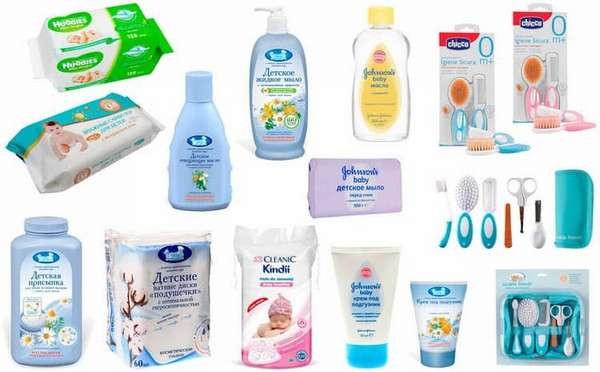
To care for your skin while walking, you will need sunscreen in summer and cream to protect against the cold in winter.
What should be in a first aid kit for a newborn?
List of medications to complete a first aid kit for a newborn
Antiseptics . 3% hydrogen peroxide is used as an antiseptic for newborns to treat the umbilical and any other wound that may appear on the baby’s body. Also used in this capacity is a solution of chlorophyllipt, a green liquid. It is an extract from a special variety of eucalyptus, absolutely harmless and very effective. ethyl alcohol in your first aid kit in case you have to give injections to your baby. It is advisable to have potassium permanganate and bathe the baby in a weak solution until the umbilical wound heals. Iodine and will be useful . The skin around the wound is treated with iodine, and the wound itself, if one appears, is treated with “green stuff”.
Antipyretics containing paracetamol in the form of suppositories or liquids: Panadol, Ibuprofen, Efferalgan. These funds will be needed in case of a sharp rise in temperature above 38.5 degrees. It is not recommended to lower the temperature below this mark on the thermometer, because... this prevents the immune system from fighting infection.
Remedies for stomach colic. The most applicable and proven one is Espumisan .
Medicines for diarrhea. Smecta or Linex will help with diarrhea . Both products are absolutely harmless and effective.
Antiviral agents. In case of a flu epidemic or forced contact with an unhealthy person, you must have these products in your first aid kit. They will help not only in preventing the disease, but also actively treating an existing infection. From the first days of life, Aflubin and Proteflazid .
Drops for a runny nose should be in every first aid kit; they will relieve swelling of the mucous membrane and make it easier for the baby to breathe if the infection cannot be stopped in time.
Furacilin tablets are necessary for preparing a solution for washing the eyes for conjunctivitis and for washing the genitals in girls. Moreover, it is used rather as a hygienic product with an antiseptic effect, but in no case as self-medication.
Gel for relieving pain during teething is a real savior from sleepless nights and the endless whims of the baby. It effectively relieves pain, teeth grow, and the baby is cheerful and healthy. Recommended products : Dentol, Kamistad, Kalgel.
Antihistamines must also be in the first aid kit, because at any moment the baby’s body can react to any drug, food product, or even hygiene product in an unpredictable way and produce an allergic reaction, including anaphylactic shock. Telfas or Tavegil , or Suprastin should always be at hand .
Rules for storing a children's first aid kit
Care accessories and medications for a newborn may be needed at any moment. Rules for storing a first aid kit:
- Keep everything you need within your reach, but so that your child cannot reach dangerous medications or objects.
- Store medications under the conditions specified in the instructions. Candles - in the refrigerator, brilliant green, iodine - in a dark place.
- Check the validity of the expiration date of your medications every month.
- Keep the first aid kit on the baby's dresser, changing table, or in a closet in a visible place.
